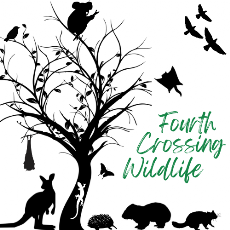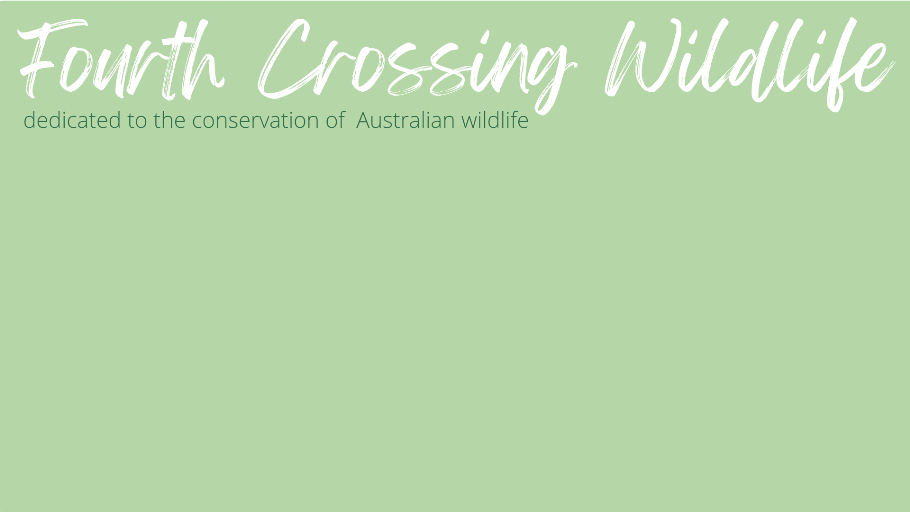Stories
Seizures and Poo
by Linda Dennis
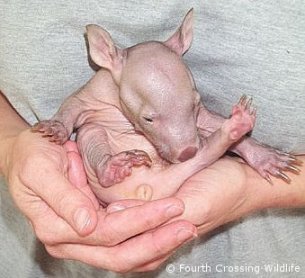 Keti, not long after coming into care 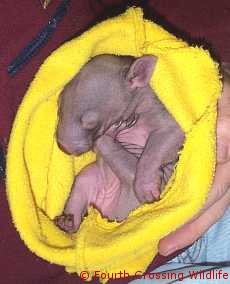 Just a few weeks later 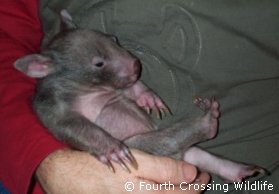 Keti, kicking back 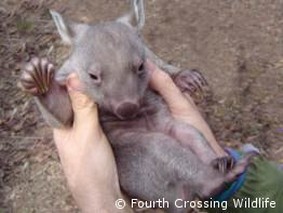 Growing girl 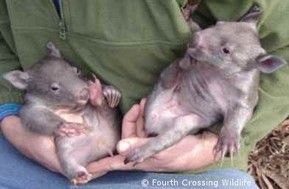 Keti and her buddy Alu 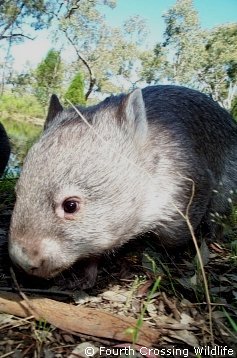 During a wombat walk 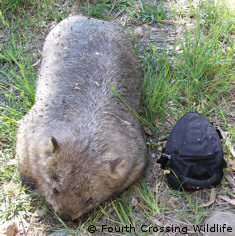 The Final Heartbreaking Chapter Keti died after being hit by a car some two years after her soft release at Fourth Crossing. | It's something that you'd never think would go hand in hand - seizures (from some kind of abnormal neurological function) and poo! But apparently - so my hand raised Bare-nosed Wombat Keti showed me - there is a connection. This is a not a scientifically documented occurrence, in fact there doesn't seem to be much known about the connection at all, but from the ordeal that Keti went through it certainly does seem to be an issue and one that we should keep in mind. I received Keti as a furless joey, aged approximately 4.5 months and weighing 542 grams. Her mum had been hit by a car, but luckily for her, she was rescued not long after the accident and brought into care. Keti had a pretty hard start. She was my first tiny wombat, but when I saw her I was concerned with her appearance - she looked gaunt. I set Keti up in a warm, humid environment and started a feeding regime using Wombaroo formula. She was taking her milk and seemed settled, but a few days later she still looked "wrong". I took some photos, including the one above, and emailed them to an experienced wombat carer. I received an urgent email back saying that the hollows in her temples indicated an immensely distressed, malnourished or dehydrated joey (my very first experience with "distress hollows"). I had been told by Keti's rescuers that she had only been in care for a few hours and that they had kept her bundled up and warm until I arrived to collect her, so I am at a loss as to why Keti was in such a bad way when she received into care. Maybe her wombat mum had been struggling during the drought and Keti had been compromised before coming into care. Who knows? That part of Keti's life will remain a mystery. I was advised that although she didn't look dehydrated in the photo, sub-cutaneous fluids may be beneficial. And I was told that if I couldn't pull her out of the condition she was in she would probably die within days. PANIC!! The next day I took her to the vets and she was given subcutaneous fluids. I also decided to increase our contact with her and started carrying her in her pouch tucked down my jumper - she improved remarkably. Those hollows disappeared within day and she gained weight - a week and a half later she weighed 670 grams. The next month went by without incident. I had noticed, however, that Keti wasn't poo-ing regularly but I was advised that it wasn't uncommon for a wombat joey to go without passing faeces for days at a time. I noted in my diary that 3 days had gone without a poo and although I was concerned I was told not to worry and she would pass faeces when ready. A week went passed and she only did a couple of very small poo's. During this whole time she was offered water as well as her normal milk intake. I mixed olive oil into her milk to make the bowel lining slippery so poo could pass easier. Keti was constantly checked for hydration and appeared fine. Then, at 10pm at night, Keti had a seizure. It was one of the most frightening things I have ever experienced as a wildlife carer. Her tiny little body, now weighing around the 1 kilogram mark, convulsed and contorted and her breathing was very sporadic. When the seizure stopped her body became rigid and the look in her eyes showed she was terrified. The worst thing - she stopped breathing! - my husband Todd immediately performed mouth to nose (!) resuscitation. What seemed like forever but was probably only about a minute or so her body relaxed and she started breathing normally. She was exhausted and fell into a deep sleep until the morning. Keti was taken to the vets the next day and we could find no reason for her not to be passing normal faeces. My vet, Kim Rolls, was also concerned that she hadn't passed, and didn't agree with the advice I was given about "not pooing" being normal. Kim gave Keti an enema and recommended I take her home and insert oil mixed with warm water into her anus. Although the oil in the bottle is good, it doesn't work as well as the oil being inserted straight into the anus. The oil forms a slippery coating around the faeces and the warm water absorbs into the faeces making it softer and easier to pass. Keti passed several small faeces over the next week, but not as much as I'd hoped. Six days later I was on my way into town with Keti and her buddy Alu so that Todd could look after them as I was meeting up with a friend for lunch. 500 metres down the road Keti had her second seizure! It was similar to the first - her little body (1.2kg) was rocked with spasms. When the seizure was over her body was a stiff as a board and her breathing stopped. This time it was me who gave mouth to nose resuscitation! When she appeared over the worst of it I drove to Todd's work and rang Benn Bryant, Senior Vet at the Western Plains Zoo to see if he could shed some light. I advised him what had happened and he told me to come directly to the clinic for intensive tests. Dubbo is an hour and a half's drive but I left straight away - all thoughts of my much anticipated lunch were forgotten (sorry Margie!). Benn took blood and also gave her an ultrasound (or x-ray, can't remember which one it was now!?!?!) to find there was a fair bit of faeces built up. Keti was given more sub-cut fluids and after finding nothing else wrong I was allowed to take her home. Later, blood test came back showing a very healthy little wombat. It's important to note that Benn didn't agree that "not pooing" was normal either. He told me that animals should poo regularly, normally once a day. The mystery continued. Two days later Keti did the biggest poo in the whole wide world! I could find no substance in the poo that may have blocked her up (yes, we wildlife carers have to look through poo!) although some of the poo was very hard. Since that day Keti poo'd regularly and didn't have another seizure. During my visit with Benn he told me about a baby rhinoceros at the zoo that suddenly showed signs of neurological problems. He seemed fine one day, but then suddenly couldn't stand and kept falling onto his bum. After a few days of tests - and head scratching - Benn and his team gave the rhinoceros an enema. Hey presto! No more falling on bottom! So, there's got to be link there somewhere between no poo and seizures. Maybe the discomfort and bloat from being constipated pressed on the spinal column which then effected the brain? I really don't know for sure what happened and my vets don't either - but my advice from all of this is to never ignore a joey that hasn't poo'd for a while - it's just not right! Always act on it, whether it's via sub-cut fluids, enemas or whatever - always act sooner rather than later! By the way, Keti was (soft) released some months later - a strapping 17 kilogram bundle of wombat and she still lives in the area today. The Final Chapter Two years and seven months after Keti was released.... she is dead. Keti was found on the side of the road a few weeks ago, she'd been hit by a car. How do we know it was Keti? She had an unmistakable swirl of fur on her forehead which set her apart from all other wombats. What a horrible way to find out that the rehabilitation and release method I have been using over the years is working. Keti must have been 40kg plus at the time of her death. She was massive! She had no signs of mange or wounds from territorial fighting. She was still big, healthy and beautiful! So it is a sad ending, but a good one at the same time. Keti lived a full and happy life. It puts to rest - at least in my mind - the claims that (correctly) rehabilitated marsupials do not live long in the wild after release. Love and Light, my beautiful Keti. |
